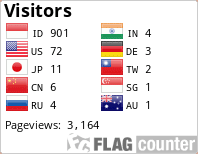NATIONAL EMERGENCY DEPARTMENT OVERCROWDING SCORE (NEDOCS) DALAM MENGUKUR KEPADATAN INSTALASI GAWAT DARURAT (IGD) : LITERATURE REVIEW
DOI:
https://doi.org/10.31004/jkt.v6i1.43375Keywords:
National Emergency Department Overcrowding Score (NEDOCS), Emergency Department (ED) overcrowding, Emergency Department (ED)Abstract
Kepadatan di Instalasi Gawat Darurat (IGD) merupakan tantangan besar dalam sistem layanan kesehatan yang dapat menyebabkan peningkatan waktu tunggu pasien, penurunan kualitas layanan, dan risiko keselamatan pasien yang lebih tinggi. National Emergency Department Overcrowding Score (NEDOCS) adalah salah satu alat yang banyak digunakan untuk menilai tingkat kepadatan IGD secara kuantitatif. Penelitian ini menggunakan metode literature review, dengan mengumpulkan artikel dari database ProQuest dan PubMed dalam lima tahun terakhir. Artikel yang dipilih berkaitan dengan penggunaan NEDOCS di IGD. Dari hasil penyaringan, tiga artikel yang paling relevan dianalisis lebih lanjut untuk mengevaluasi efektivitas NEDOCS dalam mengukur kepadatan IGD. Hasil kajian menunjukkan bahwa NEDOCS terbukti efektif dalam mengukur kepadatan IGD dan memiliki validitas tinggi dibandingkan dengan model lain seperti mSEAL dan EDWIN. Faktor utama yang meningkatkan skor NEDOCS adalah access block, yaitu keterlambatan dalam pemindahan pasien ke ruang rawat inap. Strategi yang dapat diterapkan untuk mengurangi hambatan akses dengan rata-rata waktu tunggu pemeriksaan awal 60 menit, dan 4 jam untuk waktu masuk ke rawat inap, dipulangkan atau dirujuk. NEDOCS adalah alat yang andal dalam mengukur kepadatan IGD dan dapat digunakan sebagai dasar pengambilan keputusan di rumah sakit. Namun, implementasinya perlu disesuaikan dengan kondisi masing-masing rumah sakit untuk meningkatkan efektivitas dalam manajemen kepadatan IGD.References
Affleck A, Parks P, Drummond A, Rowe BH, Ovens HJ. Emergency department overcrowding and access block. CJEM. November 2013;15(06):359–70.
Altun M, Kudu E, Demir O, Karacabey S, Sanri E, Onur OE, dkk. Effect of access block on emergency department crowding calculated by NEDOCS score. Am J Emerg Med. Agustus 2024;82:136–41.Bernstein SL, Aronsky D, Duseja R, Epstein S, Handel D, Hwang U, dkk. The Effect of Emergency Department Crowding on Clinically Oriented Outcomes. Acad Emerg Med. Januari 2009;16(1):1–10.
Asplin BR, Magid DJ, Rhodes KV, Solberg LI, Lurie N, Camargo CA. A conceptual model of emergency department crowding. Ann Emerg Med. Agustus 2003;42(2):173–80.
Boldori HM, Ciconet RM, Viegas K, Schaefer R, Santos MND. Cross-cultural adaptation of the scale National Emergency Department Overcrowding Score (NEDOCS) for use in Brazil. Rev Gaúcha Enferm. 2021;42:e20200185.
Boyle A, Abel G, Raut P, Austin R, Dhakshinamoorthy V, Ayyamuthu R, dkk. Comparison of the International Crowding Measure in Emergency Departments (ICMED) and the National Emergency Department Overcrowding Score (NEDOCS) to measure emergency department crowding: pilot study. Emerg Med J. Mei 2016;33(5):307–12.
Hargreaves D, Snel S, Dewar C, Arjan K, Parrella P, Hodgson LE. Validation of the National Emergency Department Overcrowding Score (NEDOCS) in a UK non-specialist emergency department. Emerg Med J. Desember 2020;37(12):801–6.
Hwang U, McCarthy ML, Aronsky D, Asplin B, Crane PW, Craven CK, dkk. Measures of Crowding in the Emergency Department: A Systematic Review. Acad Emerg Med. Mei 2011;18(5):527–38.
Improta G, Majolo M, Raiola E, Russo G, Longo G, Triassi M. A case study to investigate the impact of overcrowding indices in emergency departments. BMC Emerg Med. 9 Agustus 2022;22(1):143.
Morley C, Unwin M, Peterson GM, Stankovich J, Kinsman L. Emergency department crowding: A systematic review of causes, consequences and solutions. Bellolio F, editor. PLOS ONE. 30 Agustus 2018;13(8):e0203316.
Pines JM, Hilton JA, Weber EJ, Alkemade AJ, Al Shabanah H, Anderson PD, dkk. International Perspectives on Emergency Department Crowding: International Perspectives On Ed Crowding. Acad Emerg Med. Desember 2011;18(12):1358–70.
Signorini F, Nattino G, Rossi C, Ageno W, Catania F, Cortellaro F, dkk. Measuring the crowding of emergency departments: an assessment of the NEDOCS in Lombardy, Italy, and the development of a new objective indicator based on the waiting time for the first clinical assessment. BMC Emerg Med. 17 Oktober 2024;24(1):196.
Sun BC, Hsia RY, Weiss RE, Zingmond D, Liang LJ, Han W, dkk. Effect of Emergency Department Crowding on Outcomes of Admitted Patients. Ann Emerg Med. Juni 2013;61(6):605-611.e6.
Weiss SJ, Derlet R, Arndahl J, Ernst AA, Richards J, Fernández‐Frankelton M, dkk. Estimating the Degree of Emergency Department Overcrowding in Academic Medical Centers: Results of the National ED Overcrowding Study (NEDOCS). Acad Emerg Med. Januari 2004;11(1):38–50.
Weiss SJ, Ernst AA, Nick TG. Comparison of the National Emergency Department Overcrowding Scale and the Emergency Department Work Index for Quantifying Emergency Department Crowding. Acad Emerg Med. Mei 2006;13(5):513–8.
Wretborn J, Starkenberg H, Ruge T, Wilhelms DB, Ekelund U. Validation of the modified Skåne emergency department assessment of patient load (mSEAL) model for emergency department crowding and comparison with international models; an observational study. BMC Emerg Med. Desember 2021;21(1):21.
Zafar Z, Ashraf N, Alamgir W, Rehman A, Ain QU, Ilyas S. Comparison of the International Crowding Measure in Emergency Departments (ICMED) and the National Emergency Department Overcrowding Study (NEDOCS) in Tertiary Care Hospital to Measure Emergency Department Crowding. Pak Armed Forces Med J. 22 Februari 2023;73(1):3–7.
Downloads
Published
Issue
Section
License
Copyright (c) 2025 Prima Zola, Ascobat Ghani

This work is licensed under a Creative Commons Attribution-ShareAlike 4.0 International License.
Authors who publish with this journal agree to the following terms:
- Authors retain copyright and grant the journal right of first publication with the work simultaneously licensed under a Creative Commons Attribution License that allows others to share the work with an acknowledgement of the work’s authorship and initial publication in this journal.
- Authors are able to enter into separate, additional contractual arrangements for the non-exclusive distribution of the journal’s published version of the work (e.g., post it to an institutional repository or publish it in a book), with an acknowledgement of its initial publication in this journal.
- Authors are permitted and encouraged to post their work online (e.g., in institutional repositories or on their website) prior to and during the submission process, as it can lead to productive exchanges, as well as earlier and greater citation of published work (See The Effect of Open Access).





